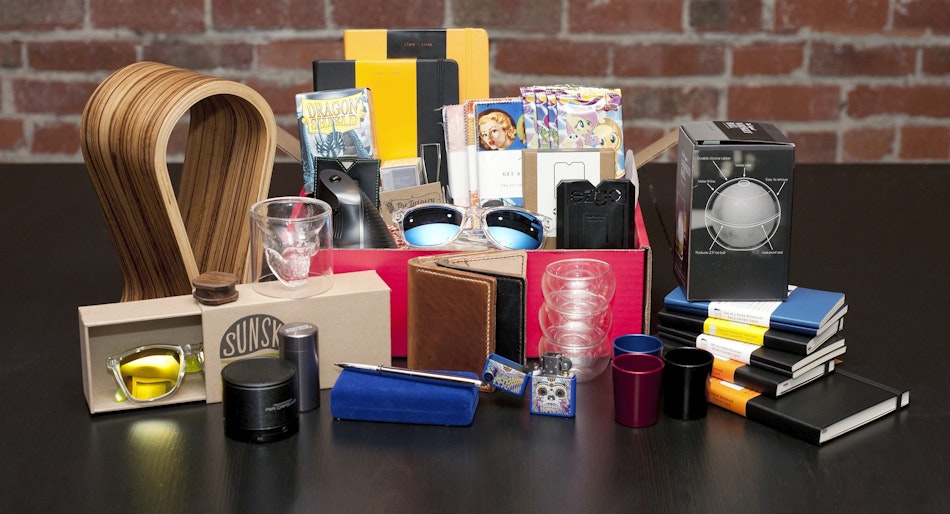Arguably, the most important aspect of a standing desk is not the desk itself, but what you'll be standing on. That humble patch of real estate plays an analogous role to the office chair that can take up hundreds - or even into the thousands - of dollars from your office budget. Standing on an unyielding surface for hours on end can be just as if not more detrimental to your health as sitting in an ill-fitting chair, so spending a little bit of money to improve your standing experience should be a matter-of-course expense.
My "standing desk" setup is merely a dresser top of suitable height paired with a LCD TV raised to a comfortable height on a wall mounted bracket system. I lucked out in that all the components were repurposed, down to the older desktop PC that has found a new lease on life as my standing workstation. The only piece of the puzzle that I had to purchase outright was the floor mat that I'm standing on right now, an Imprint CumulusPro. At between $70-$100 retail, it may seem at first a little pricey for something that you'll place on the floor. But if you've ever stood in place on a hard surface for a prolonged period of time, you'll know that a little bit of cushioning - while still providing support - can go a long way to increasing comfort. That's where a standing mat comes in.
The 24-inch by 36-inch version of the Imprint CumulusPro is made in Korea, which distinguishes it from the smaller 20-inch by 30-inch version, which is made in China. I don't discriminate between countries of origin without cause, and in this case some that cause comes in the form of some user reports on the Wirecutter desk mat review page that indicate that some of the smaller CumulusPros exhibited a strong odor due to improper curing. As a result, even though my floor space would have been perfectly served by 20"x30", I opted for the more expensive (and slightly oversized for my purposes) 24"x36" size from the original Korean manufacturer.
The CumulusPro feels firm and supportive when stood on, yet there is enough give beneath your heels and arches to keep your feet from getting fatigued or achy. I use it barefoot, and find it far less taxing on my feet than the hardwood floor beneath it. Whereas my feet would start to feel fatigued after 1-2 hours of standing work, I can easily go for extended 3-4 hour work sessions without feeling the need to get off my feet.
If you're considering a standing desk setup, a good floor mat is probably the second-most important element (with the first being the height and position of your monitor, keyboard, and mouse). It seems hard to do any better in that department than the Imprint CumulusPro.
My "standing desk" setup is merely a dresser top of suitable height paired with a LCD TV raised to a comfortable height on a wall mounted bracket system. I lucked out in that all the components were repurposed, down to the older desktop PC that has found a new lease on life as my standing workstation. The only piece of the puzzle that I had to purchase outright was the floor mat that I'm standing on right now, an Imprint CumulusPro. At between $70-$100 retail, it may seem at first a little pricey for something that you'll place on the floor. But if you've ever stood in place on a hard surface for a prolonged period of time, you'll know that a little bit of cushioning - while still providing support - can go a long way to increasing comfort. That's where a standing mat comes in.
| Image courtesy Amazon.com. |
The 24-inch by 36-inch version of the Imprint CumulusPro is made in Korea, which distinguishes it from the smaller 20-inch by 30-inch version, which is made in China. I don't discriminate between countries of origin without cause, and in this case some that cause comes in the form of some user reports on the Wirecutter desk mat review page that indicate that some of the smaller CumulusPros exhibited a strong odor due to improper curing. As a result, even though my floor space would have been perfectly served by 20"x30", I opted for the more expensive (and slightly oversized for my purposes) 24"x36" size from the original Korean manufacturer.
The CumulusPro feels firm and supportive when stood on, yet there is enough give beneath your heels and arches to keep your feet from getting fatigued or achy. I use it barefoot, and find it far less taxing on my feet than the hardwood floor beneath it. Whereas my feet would start to feel fatigued after 1-2 hours of standing work, I can easily go for extended 3-4 hour work sessions without feeling the need to get off my feet.
If you're considering a standing desk setup, a good floor mat is probably the second-most important element (with the first being the height and position of your monitor, keyboard, and mouse). It seems hard to do any better in that department than the Imprint CumulusPro.


